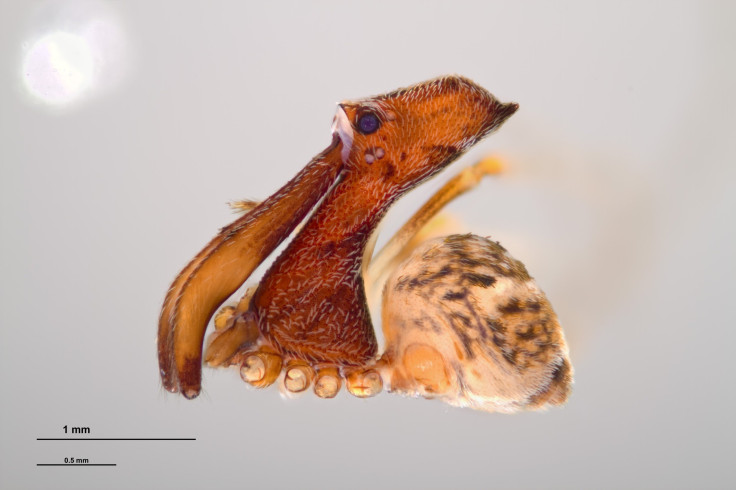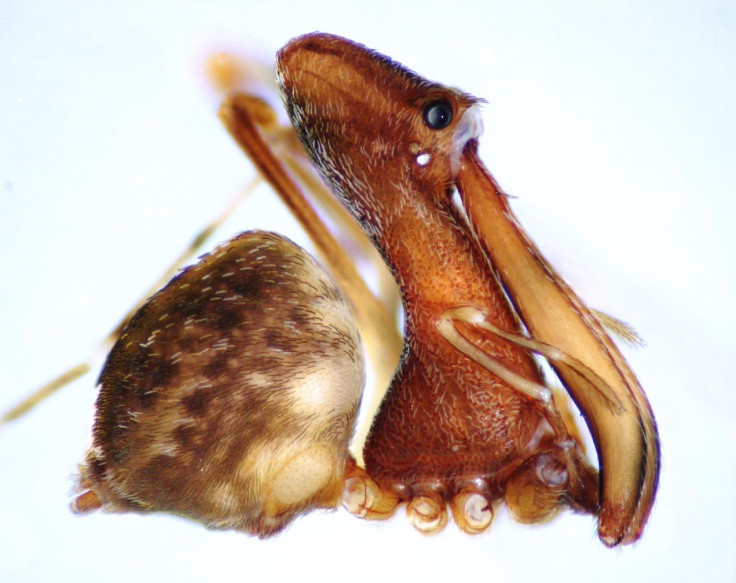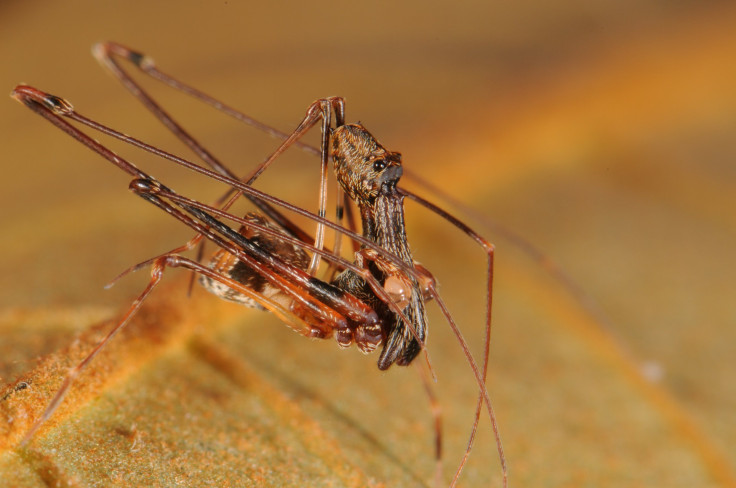18 New Terrifying Assassin Spider Species Look Like Pelicans

A strange-looking family of spiders have the appearance of pelicans and will eat their own kind. Adding to the intrigue is that there are many more of these monstrous-looking creatures than scientists had previously realized.
The unusual arachnids have 18 new species among their ranks after scientists described their discovery in a new study in the journal Zookeys. Their pelican-like look could be fuel for the nightmares of arachnophobes everywhere, with structures that resemble the long necks and beaks of those birds. They also prey upon their own kind, other spiders, in what is typical practice for the animal kingdom but may sound brutal to human ears.

“Pelican spiders are active hunters, prowling the forest at night and following long silk draglines that lead them to their spider prey,” according to a statement from the Smithsonian Institution. “When a pelican spider finds a victim, it swiftly reaches out and impales it on its long, fang-tipped ‘jaws’ … then it holds the capture away from its body, keeping itself safe from potential counterattacks, until the victim dies.”
They are also known as assassin spiders.
The study reviews what scientists have learned about the spiders, which have not been very thoroughly studied, in part because they live in remote areas. It describes a total of 26 pelican spider species from Madagascar, 18 of which are new. Some were discovered in the wild while others came from museum specimens.

According to the paper, the creatures live in the Southern Hemisphere, specifically in Madagascar, Australia and South Africa, while their Northern Hemisphere lines have all gone extinct. The ones that exist today give a window into the evolutionary past, because they appear similar to the fossils of extinct pelican spiders previous scientists have found reaching back millions of years.
“These spiders attest to the unique biology that diversified in Madagascar,” researcher Hannah Wood said in the Smithsonian statement. “I think there’s going to be a lot more species that haven’t yet been described or documented.”
© Copyright IBTimes 2024. All rights reserved.











